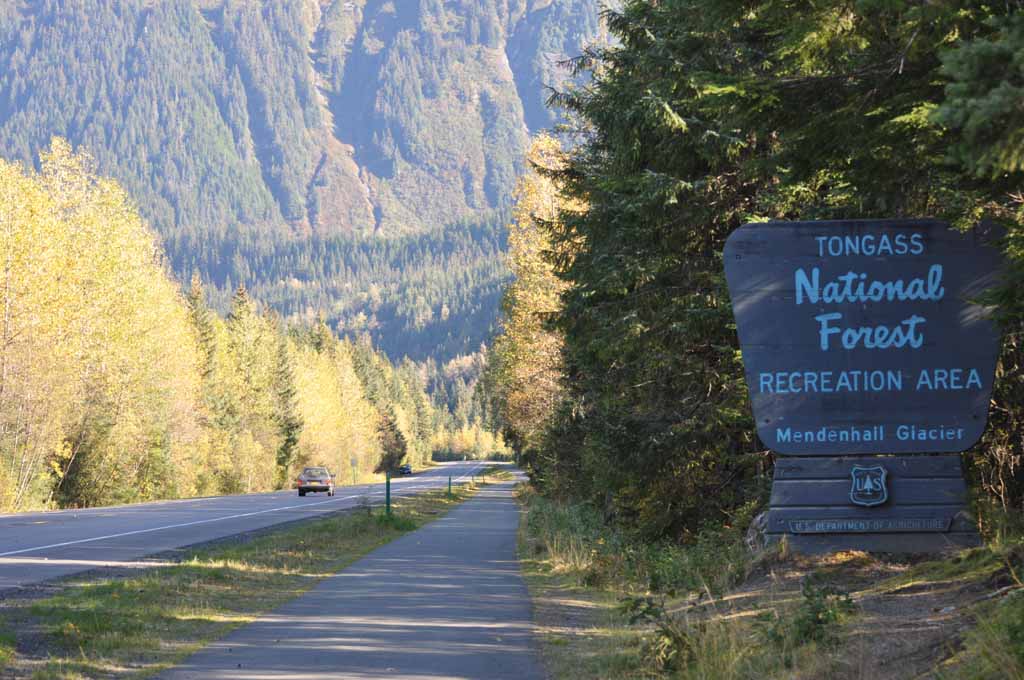|
By: Karsen Grace Located in Southeast Alaska, the Tongass National Forest is the largest national forest in the United States at slightly under 17 million acres. Initially, Tongass was established in 1907 by an executive order issued underneath Theodore Roosevelt’s presidency. However, it wasn’t until 1909 that official legislation declared the land a national forest. At the time, Tongass was named to honor the Tlingit Indian Tribe who were native to Southern Alaska. Enclosed by Tongass is Alaska’s well known Inside Passage—the coastal route between the Gulf of Alaska and Puget Sound. The Inside Passage allows a closer view to some of Alaska’s most precious wildlife: Sitka black-tailed deers, black and brown bears, northern otters, flying squirrels, many bird species, and precious greenery such as Sitka spruce, skunk cabbages, ferns, western hemlocks, and a variety of moses.
Despite the fact that over half of Tongass is currently protected by former President Bill Clinton’s 2001 Roadless Rule (which prohibited development on 9.37 million acres of roadless areas), a significant section of Tongass is allotted for commercial development. Regardless of past legislation to protect Tongass, more recently President Donald Trump has set out to allow further commercial development in Tongass. For the last couple of years, President Trump and his administration have been working to lift the Roadless Rule and open up Tongass for logging. Logging is the business and process of cutting down trees to use for wood. As of October 29th, according to the United States Department of Agriculture Forest Service Notice, it will be legal for logging companies to cut and remove timber as well as build roads throughout the forest. In spite of the fact that President Trump has initiated stripping protections from Tongass, President Elect Joe Biden, who will be inaugurated January 20th, 2021, could potentially reverse the decision. Even though logging in Tongass would be beneficial for logging companies, the timber industry, and the state’s economy with a surplus of new resources and land, it is a short term fix that will only deplete the state over time. Alaska, more than most states, has already experienced first hand the effects of climate change. Over the last decade, according to Alaska’s Department of Commerce, Community, and Economic Development, Alaska has suffered from thinning sea ice, melting glaciers, thawing permafrost, and increased wildfires due to record breaking high temperatures. These changes to Alaska’s climate have directly affected Alaska's water and food supply, infrastructure, and has caused an increase in flooding and erosion as well. Not only does Tongass hold a vast variety of Alaska’s wildlife, but it also holds a major role in combating climate change, acting as a natural carbon sink that holds about 8% of all carbon stored in United States’ forests. In other words, Tongass naturally absorbs more carbon dioxide—a greenhouse gas that traps heat and leads to the warming of the planet. With Alaska’s distressing climate situation and Tongass’ role in fighting climate change in mind, it is evident to see why opening up Tongass for further commercial development would do more harm than good. Although it might not seem like a direct threat to the world outside of Alaska, or even the entirety of the nation, clearing away the Tongass forest will leave a much bigger impact than you may think. According to chief scientist with the Earth Island Institute’s Wild Heritage Project Dominick DellaSala, “While tropical rainforests are the lungs of the planet, the Tongass is the lungs of North America...It is America’s last climate sanctuary.” So even if stripping Tongass may seem minute to many, it is a potential threat to the well-being of North America. Nonetheless, there are many ways that you, your friends, your family, and really anyone can contribute to protecting Tongass and therefore tackling climate change as well. One of the easiest and most accessible ways today is simply by spreading awareness. The use of social media allows just about anyone from just about anywhere to post multiple pictures or videos on an abundance of topics. Don’t be afraid to utilize your social media to spread awareness towards such pressing issues. Spreading awareness doesn’t just have to be via social media. Other possibilities can include making flyers or brochures, hosting community educational events, or even organizing a service project. Another way to contribute would be donating to a non-profit organization that focuses on Tongass forest protection, or even reaching out to a representative for their support. Merely being more aware of your carbon emissions would be enough. Actions, both small or big, are the key to any success. So don’t shy away from a small step that could lead to a better future, and initiate the change you want to see.
1 Comment
5/28/2023 07:48:19 pm
Hiring Certified Arborists means that you are making a long-term investment in the protection and vitality of your property through ensuring your trees will thrive for years to come.
Reply
Leave a Reply. |
TUGIWelcome to Seeds for Thought, the TUGI Blog where we will be highlighting incredible stories of environmental activists and change makers, environmental news, and tips to living a more green and sustainable lifestyle. If you are interested in learning more about what we are doing on a monthly basis, subscribe to our TUGI Newsletter. Archives
May 2021
Categories |
TUGI
|
|

 RSS Feed
RSS Feed
